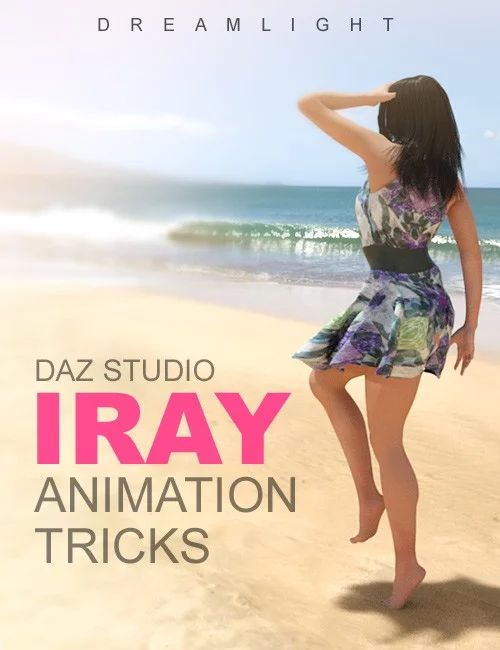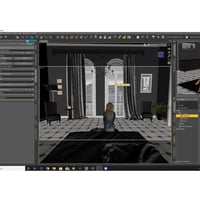

- Daz studio iray lighting tutorial how to#
- Daz studio iray lighting tutorial movie#
- Daz studio iray lighting tutorial skin#
- Daz studio iray lighting tutorial series#
Daz studio iray lighting tutorial movie#
W - for Watts, as in a 50-Watt or 100-Watt incandescent light bulb in your home, or a 10,000-Watt flood-box in a photo or movie studio and.

(Think a single lamp/bulb.) With this kidn of Unit, you get the same amount of light, no matter how big or small the emitting surface is. Units expressed as an amount for TOTAL light put out - as if by a light source which puts out a fixed amount gets "spread out" evenly to emit from the various areas of the emitting surface.The "trick" to choosing such settings may be recognizing that there are two different kinds of Luminance Unit listed to choose from, but they're not really labeled very obviously as being in two categories: With gallons, you get a lot more total milk than you do with pints. say, 12 Units? But 12 of what? Pints or gallons? a Luminance Units parameter, which is the " unit of measure" for the number of units you want.īy analogy, it may help to think of these in terms of "How much milk do you want".a Luminance parameter (for the number of "whatever" units you want) and.You'll notice in the Emissions section of the Surfaces | Edit tab that the parameters listed there include both: I'm pretty sure that changing the Luminance Units setting for Emmissive surfaces will NOT - per se - require any longer or shorter Render Times to achieve a given targeted "quality" in the resutling image.įirst, some background information - which does not seem to be explained very well at all in the Daz documentation - that makes it easier to figure out the answers to questions like the one the Original Poster (OP) asked. But you can set it to only reduce what you want it to, so it's possible to only do the background if you are doing close ups and are worried about losing detail (that was my biggest concern with getting Optimizer, but so far I've been very happy with it) I've never tried it on closeup portraits however.
Daz studio iray lighting tutorial skin#
But I've also only used it on large, wide angle scenes, so the fine details in skin and such wouldn't show anyway. Plenty of difference in render time, nut no noticable detail loss on the ones I've used it on. And honestly, I haven't really been able to see any visual difference on the ones I've used it on, even rendering at 6827×3840. I have a bad habit of blowing through the memory on my 6gb 1070, and I've successfully used Scene Optimizer several times to reduce things enough to keep the card in play. It gives you a lot of control over what gets reduced and by how much. Next I'm going to be working on reducing texture sizes (texture atlas doesn't seem to work well with the urban future 2 building :(įor reducing texture sizes, I highly recomend. On a side note, currently the scene is using 1.6 GB in geometry and objects/buildings are only used 1 time, the rest is instanced. All the signs and street lights and such are all emissive lights and I know my renders are going to be slow (I've already done some test renders and adjusted the lights for appropriate brightness) Currently I'm using the kcd/m2 Unit but I'm wondering if changing it to something like W or lm with a higher value would actually render a little faster.
Daz studio iray lighting tutorial series#
I'm revisiting a comic I had started and in order to keep area consistency throughout the whole series (however long that lasts) I'm laying out the entire city. Try decreasing in increments of 1 from the default of 13.0 for brighter pictures and decreasing by 1 for darker pictures. In the Render Settings, under Tone Mappings at the top is Exposure Value or EV and personally I feel that gets renders done faster withough as much as a bright blow-out falttening effect. Yes, but you'll blowout and flatten your render's surfaces. Master the art of adding camera angles, lighting and postwork that all co-work together.I was just wondering if there was a difference in render speed with the different Luminance Units


Daz studio iray lighting tutorial how to#
Learn how to create awesome Daz Studio Iray car animations, with individual animation layers for wheels rotation, suspension up and down movements, car movement and car body movement.


 0 kommentar(er)
0 kommentar(er)
